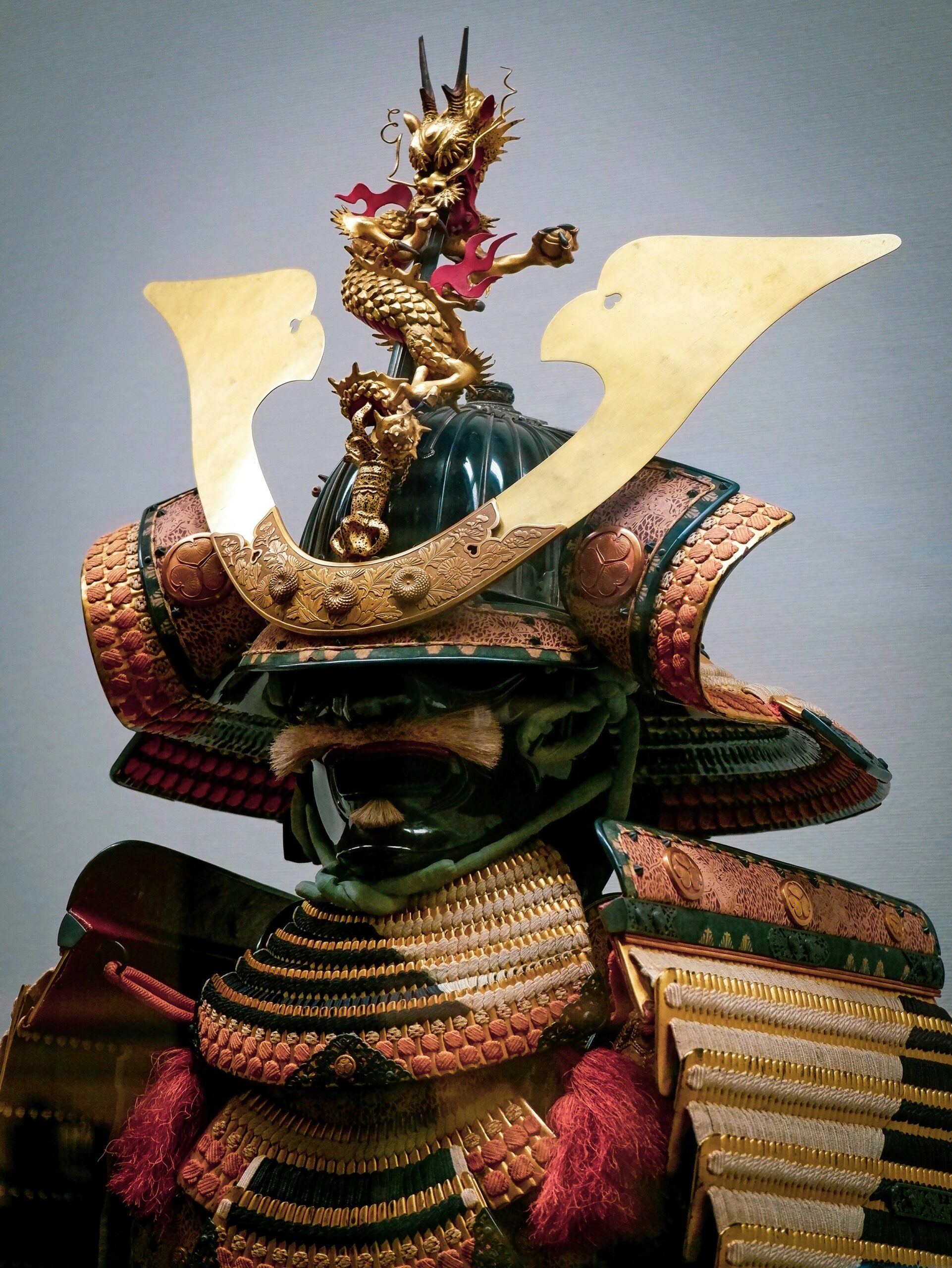Japanese armor, known as “Katchu,” was far more than just protective gear for battle. It symbolized the very soul of the samurai, a unique cultural heritage blending artistry and practicality. For those completely new to Japan, this article will guide you through its history, distinctive features, and its value in the modern world.
What is Katchu?
Katchu refers to the complete set of protective gear worn on the battlefield. Just as many cultures worldwide developed armor, Japan has used Katchu since ancient times. However, Japanese armor stands apart from others due to its unique materials, construction, and aesthetic sensibility.
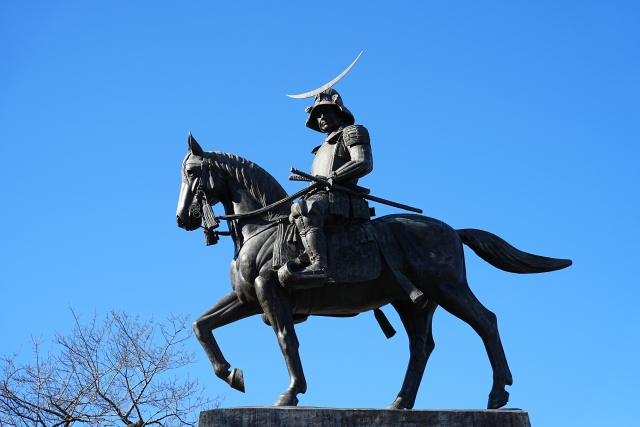
Historical Background: Why Did Katchu Develop?
The evolution of Japanese Katchu is intimately linked to Japan’s history of warfare.
- Early Armor (Kofun Period to Heian Period): In ancient Japan, mounted archery was the primary form of combat. This led to the use of “Tankō” and “Keikō,” which were designed for mobility, made from combinations of leather and iron plates. Think of them as simple protectors for specific body parts, much like modern-day skateboard pads.
- The Rise of the Samurai and the Evolution of Katchu (Late Heian Period to Sengoku Period): As the samurai class emerged and group battles involving swords became more common, there was a demand for armor that offered wider protection without hindering movement. During this period, the prototypes of Japanese armor, such as “Ō-yoroi” and “Dō-maru,” began to take shape. These were meticulously crafted from small, intricately woven leather or iron scales (kozane), much like putting together tiny, precise puzzle pieces.
- Turbulent Times and Diversification (Sengoku Period): The Sengoku Period (15th to 16th centuries) was an era of continuous warfare across Japan. Ashigaru (foot soldiers) played a significant role, and new weapons like the matchlock gun were introduced. This led to the dominance of “Tōsei Gusoku,” armor that was both mass-producible and offered enhanced defensive capabilities. This type of armor was designed for functionality and mass production, much like a modern military uniform. To intimidate enemies and boost morale on the battlefield, helmets (kabuto) were often adorned with various decorations, such as the horn-like “kuwagata” or other decorative “tatemono.”
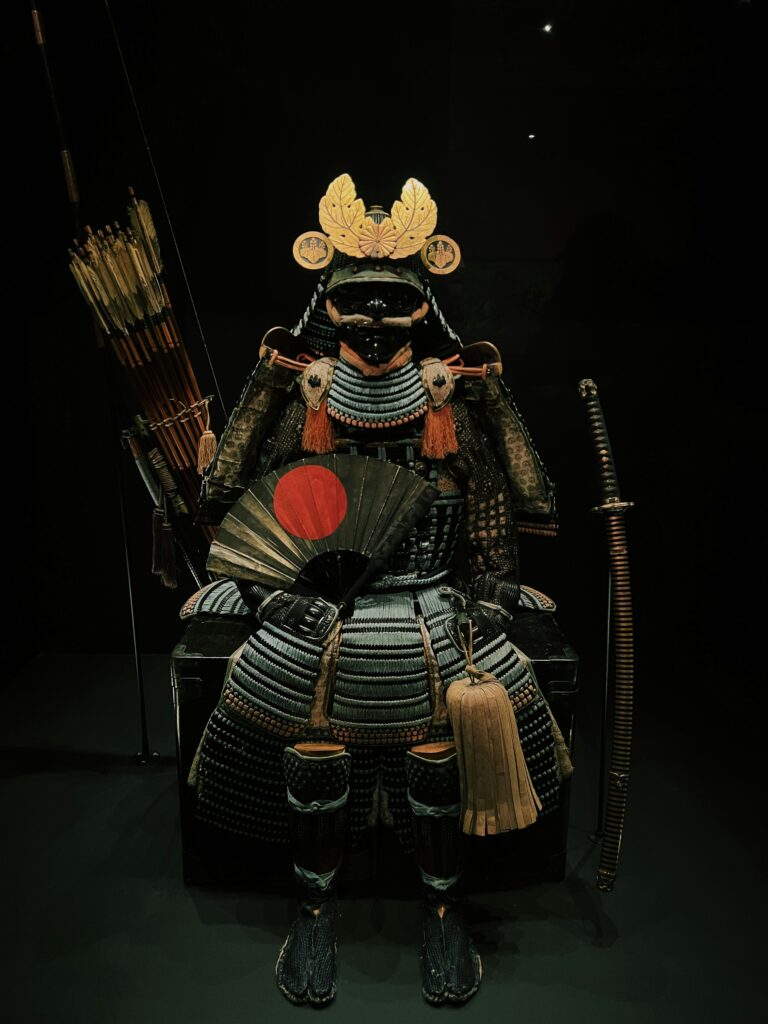
Uniqueness of Japanese Armor: A Comparison with Other Armors
Let’s look at how Japanese armor compares to armor from other parts of the world, like European plate armor.
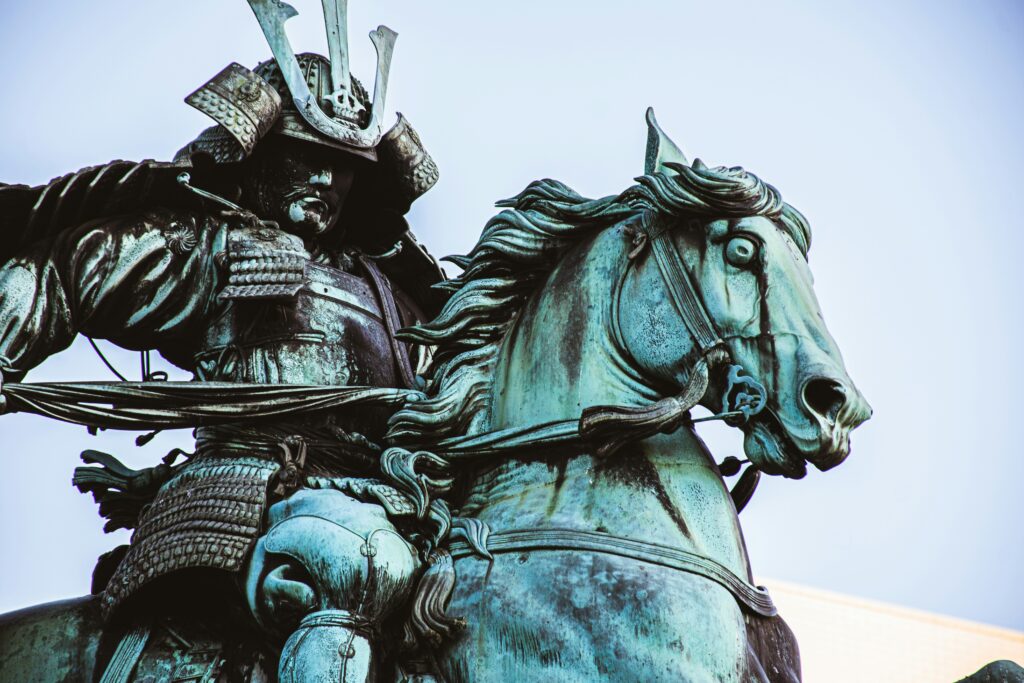
| Feature | Japanese Katchu | European Armor (e.g., Plate Armor) |
| Materials | Woven leather and small iron scales (kozane) with thread | Large, solid metal plates covering the whole body |
| Structure | Flexible, conforming to body movements | Rigid, restricting movement, but offering high defense |
| Weight | Relatively lighter (approx. 15kg-25kg / 33-55 lbs) | Heavier (approx. 20kg-50kg+ / 44-110+ lbs) |
| Aesthetics | Highly artistic, with lacquer, gold leaf, colored threads, family crests | Primarily functional, with limited decoration |
| Wearing | Multiple parts tied together with cords | Secured with hinges and clasps, creating a single unit |
| Advantages | Easy to move in, lighter, adapted to Japan’s hot and humid climate | Excellent defense against spear and sword attacks |
| Disadvantages | Can be vulnerable to strong impacts | Heavy, retains heat, restricts movement |
While Western armor often focused on “encasing the entire body in a hard iron shell,” Japanese Katchu was based on the idea of “effectively protecting necessary areas without hindering body movement.” It’s like an athlete choosing form-fitting sportswear to maximize performance – Japanese samurai also prioritized “ease of movement” in their armor.
The Allure, Advantages, and Disadvantages of Katchu
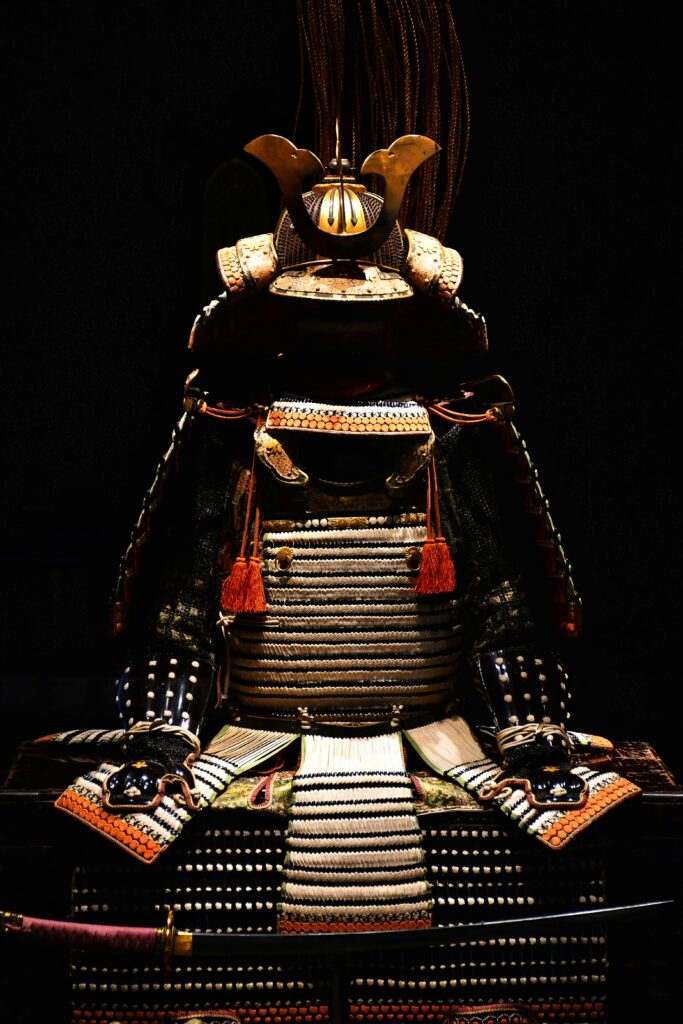
Allure:
- Artistry: The luster of lacquer, the gleam of gold leaf, the vibrant colors of the woven threads, and the distinctive helmet decorations make Katchu a true moving work of art. Each piece embodies the advanced skills and aesthetic sensibility of the artisans of the time.
- Witness to History: Every piece of Katchu carries the story of the warrior who wore it and the history of the turbulent times it witnessed. Looking at Katchu allows you to ponder Japan’s rich past.
- Functional Beauty: The functional design, meticulously calculated to protect a samurai’s life on the battlefield, possesses a beauty that resonates with modern product design.
Advantages:
- Mobility: The woven scale structure allowed for relatively free movement, making it suitable for Japan’s terrain and combat styles.
- Breathability: Using lacquered leather and plates meant better ventilation compared to solid metal armor, making it relatively more comfortable in Japan’s hot and humid climate.
- Lighter Weight: Compared to heavily armored Western counterparts, Katchu was lighter, making it suitable for prolonged battles and travel.
Disadvantages:
- Defensive Limitations: Compared to full plate armor, Katchu could sometimes offer less protection against strong impacts or sharp attacks.
- Maintenance: Since it was woven with threads, it required careful attention to thread deterioration or damage, making regular maintenance essential.
The Value of Katchu in Modern Times
While Katchu is no longer used in combat, its value remains undiminished.
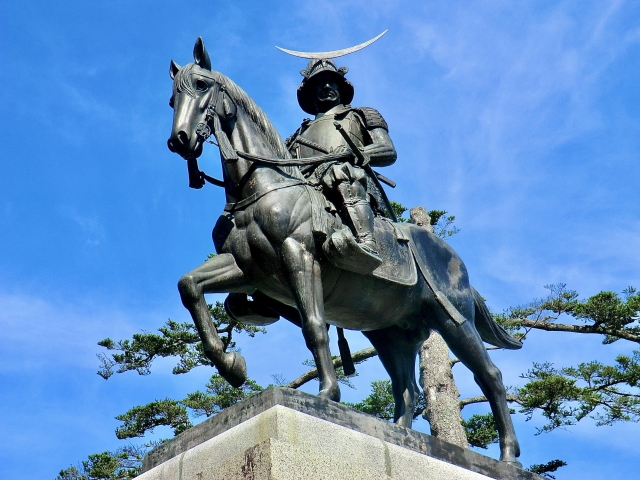
- Cultural Asset: As a precious historical and artistic cultural asset, Katchu is displayed in museums, playing a vital role in conveying Japanese history and culture.
- Craftsmanship: The traditional techniques are still passed down by skilled artisans, who continue to create elaborate Katchu. These pieces are cherished by collectors worldwide as works of art.
- Spiritual Symbol: As a symbol of the samurai spirit—the “Bushido” that involved facing challenges head-on—Katchu holds a special place for Japanese people. On Children’s Day, miniature Katchu are sometimes displayed to wish for the healthy growth of boys.
- Entertainment: Japanese Katchu frequently appears in movies, anime, and games, sharing the allure of Japanese samurai culture with people across the globe.
Japanese Katchu goes beyond the mere scope of weaponry or protective gear; it is a “living art” that embodies Japan’s history, culture, and aesthetic sensibility. If you ever have the chance to visit Japan, we highly recommend seeing real Katchu in a museum. You’ll undoubtedly be captivated by its profound depth!

